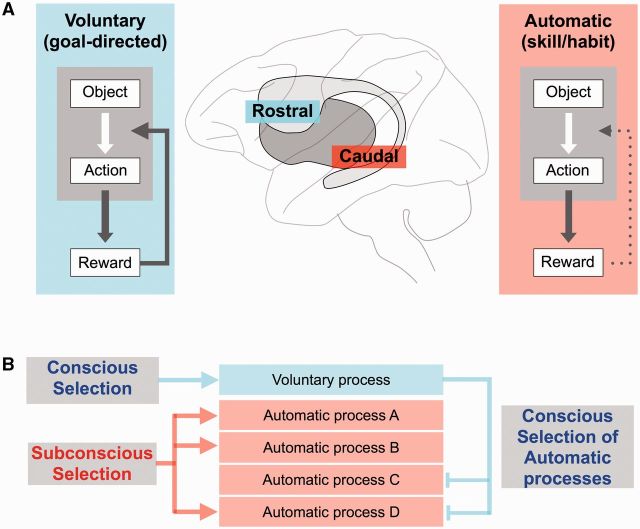Figure 7.
Interaction between voluntary and automatic behaviour—a hypothesis. (A) Voluntary and automatic mechanisms are separated between rostral and caudal basal ganglia circuits. Each mechanism controls behaviour in two steps: finding good objects; and manipulating the good objects, and is modulated by reward outcomes. Critically, the reward effect is strong but temporary for the voluntary mechanism and weak but cumulative for the automatic mechanism. (B) Separate versus interactive operations of voluntary and automatic mechanisms. These mechanisms may operate independently, with voluntary mechanism being guided consciously while multiple automatic mechanisms being guided subconsciously (left). Alternatively, they may interact with each other, with the automatic mechanisms consciously selected by the voluntary mechanism (right), or the voluntary mechanism triggered by automatic mechanisms (not shown).

